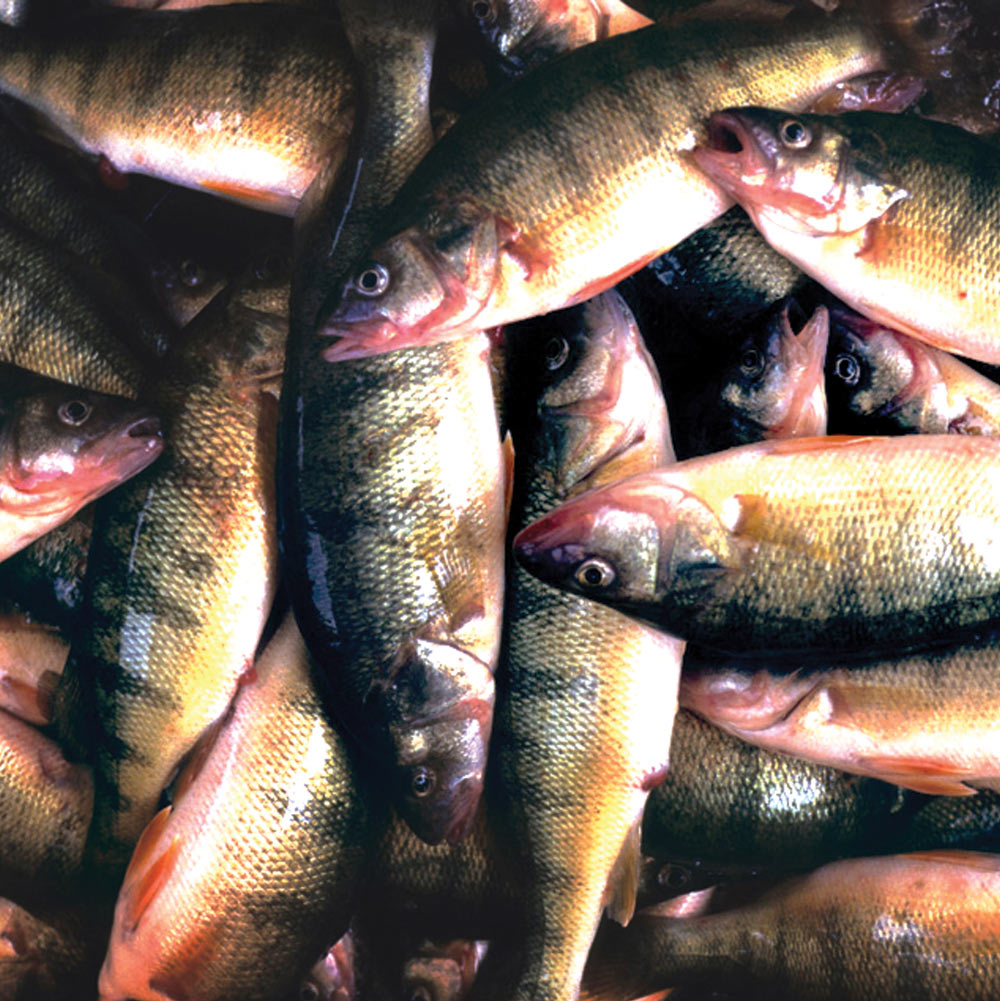
One of the first fishing “tricks” I learned as a kid has, in the decades since, entertained fellow anglers and netted me some fine catches from both fresh and salt water and yellow perch in particular. That’s one of the joys of traveling to fish: discovering local tactics that can be learned and put into practice back at home – sometimes with startling results.
For example, after spending several years living and fishing in the Florida Keys, one of the angling tactics I brought back to the Midwest was chumming. In its simplest form, chumming is introducing food into the water that will draw baitfish and predators to the area around the boat to spark a feeding frenzy. In the Keys we used bags or boxes of frozen commercial chum containing ground fish and oils that created a slick and a cloud of food particles swept down current with the tide as the fragrant chunks thawed from chum bags hung over the transom.



Live bait anglers in both fresh and salt water will often clip a fin off a baitfish before offering it to the depths. They realize that the predator species they target are drawn to dine on injured baitfish which are easier to catch, and the action of a fin-clipped fish mimics an easy meal. That said, I’ve tried this with emerald shiners and didn’t notice a significant uptick in my perch catching.
As for the fishing trick I learned as a kid in fresh water that has worked well in the salt, it can help keep you in the strike zone of schooling fish such as yellow perch, as well as crappies and white bass, that often roam and suspend over open waters this time of year. You take a partially inflated party balloon and attach it to a length of line equal to the depth at which the fish was caught to which a hook is tied at the working end. Keep the balloon rig handy until the bite slows and someone aboard catches a perch, which is unhooked from the fishing line and re-hooked to the line that trails the balloon. The so-tethered fish is then placed back in the water to re-join its finned brethren below – trailing a high-vis marker floating on the surface that needs only be followed by boat to allow the anglers to remain over the school. Of course, when the fishing is over you retrieve the marker, gently unhook the golden “bell cow,” and release the perch back in its home water as a reward for a job well done.


Those fishing amenities complement standard FunDeck features that include a telescoping boarding ladder aft, a comfy captain’s chair with folding arms and rotating sliders at the full-featured helm, and bow anchor storage beneath a nifty electric power canopy and surrounded by sound from a four-speaker Fusion RA60 audio system. If you are in the market for a multi-use deck boat for up to a dozen folks to enjoy at a time, I urge you to look at the photo here and on the Hurricane website to get a feel for how cool this FunDeck looks on the water.
